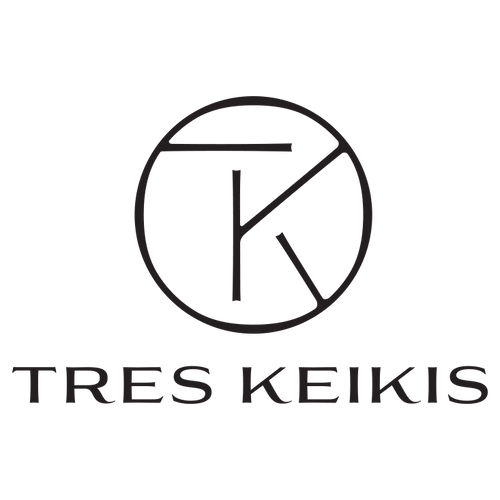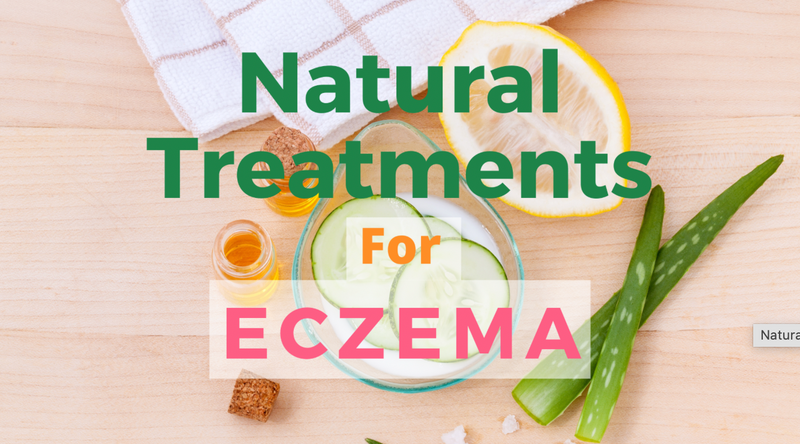What is the most powerful defense you can harness to get your eczema under control? …
MOISTURIZE.

It seems simple and straight forward, however, as you know if you suffer from eczema, nothing is straight forward and easy. This blog is about discussing why moisturizing is such a powerful tool and the best plant made ingredients that work to repair a damaged skin barrier.
Eczema is a complicated disease, because it is caused by a variety of small genetic mistakes in various different DNAs, meaning the vast majority of people who have eczema, arrived there for different reasons. The good news is, no matter which gene-malfunction is causing your eczema, there is something fundamental that all eczema patients have in common and something that is very treatable. A compromised skin barrier. Even better news, if you learn how to care for your skin barrier, you will have greater success in keeping it intact and avoid flares.
Dry skin is main culprit in the first part of the story. The majority of flare-ups can be avoided by learning how to keep your skin moist, and paying attention to what triggers you causing your skin to dry out. It is important to keep in mind that people don’t develop the urge to start scratching until the skin cells become dehydrated. Once a cell has lost hydration, it changes it shape. Once this happens, it releases its inflammatory chemical messengers telling your brain to scratch. …..So, the key is to keep your cells hydrated and plump in order to avoid triggering the urge to itch.

The most obvious of them all is to use lotions and creams, everyday. Don’t wait until you have a dry spot to start moisturizing, by then it is too late and the scratch-itch cycle may quickly get out of control.

Why is moisturizing so important in the first place?
Clearly, as you know, the goal is to keep your outer most skin moist, so that it doesn’t dry out, get flaky and trigger the itch-scratch cycle. Another less talked about benefit of moisturizers is helping maintain a healthy bacterial population on the surface of your skin and inside the layers of your skin. Thats right, just like our intestines, our skin is also populated with good bacteria, fungi, viruses, and even…. microscopic mites….. Our skin has its own microscopic metropolis happening, it’s called our microbiome. All of these critters are typically harmless and suprisingly helpful as long as they are in balance. This microbiome’s diversity is one reason that cleansing your body with antibacterial soap doesn’t stop eczema. We need the bacteria on and in our skin. Keeping the microbiome in a healthy balance is key to avoid inflammation and itching. Moisturizing helps keep this population in balance.

This bacterial balance is a very big deal for eczema sufferers, one you may not have learned about before. Staphylococcus aureus is the most common bacterial found on the outer layer of our skin. Not surprising it is also the most common infection people with eczema acquire. When we scratch the skin, we open tiny holes in the barrier that unfortunately let in which ever bacteria happens to be at that spot on the skin. If the microbiome is out of balance, the harmful bacteria may take over, resulting in an infection. One weakness of Staphylococcus aureus, is that their cell walls of are lipophobic, meaning they don’t hold up well when exposed to lipids - (which are fats/oils), the same ones found in many plants made fats. Plant fats can help combat Staphylococcus aureus by weakening the bacteria cell wall (study here). Just by using the right types of plant based moisturizer can help keep you Staphylococcus aureus in check.
Another down side of too much Staphylococcus aureus, it also works to directly irritate the surface of your skin. Staphylococcus aureus secrets an exotoxin (similar to poison) that breaks down an important protein in the ‘glue’ of our skin barrier. Desmogelin-1. (Study here) Simply applying a moisturizer with right plant fats also helps to control the Staphylococcus aureus population by disrupting the cell walls of bacteria and keeping the population in check. This ‘overpopulation-oil’ piece of the puzzle helps explain why people tend to flare in certain spots more than others, because Staphylococcus aureus tends to bloom in concentrated areas.
Bacteria and yeasts blooms in different area occur because depending on the location of the skin on our body, the environment for the microbiome can change. For example, the armpit is a much different environment than our arms. The inside of elbows will typically have quite a different bacterial population than the outside, usually more Staphylococcus aureus. Eczema often occurs on the inside of elbows while other skin conditions like psoriasis, which are not bacterially induced, occur on the outside. Suggesting there is a microbiome link if eczema and not psoriasis.
It turns out there is such a thing as keeping your skin too clean, and harming the beneficial bacteria in your microbiome (see here). Trying wash away the Staphylococcus aureus, will also kill of the good bacteria that our skin relies on. By keeping your skin moisturized with fats that support the good bacteria and combat the bad bacteria is a useful tool! This enables the skin barrier to be strong and the added bonus of microbiome in a healthy balance.

Unfortunately not all moisturizers are created for the same purpose. For example, think about the light weight non-pore clogging moisturizers we use on our faces and compare that to the thick creamy moisturizers we might use on the tough skin of our feet. Just like different parts of the body benefit from different types of moisturizers, the same is true for moisturizing in eczema. The skin barrier malfunctions in eczema sufferers will benefit from certain types of plant fats better than others.
With eczema there are two main types of moisturizers which will be most useful. First, the daily moisturizer, a lightweight lotion that contains lineoleic acid to shore up the fats in the barrier and minerals that support surface skin cells the microbiome. (We will talk about this in a moment) The second type of moisturizers is what to use during a flare, on the affect inflamed locations.
During a flare the barrier has already been disrupted. Applying a moisturizer that works to help seal the skin and calm the immune system will help the area heal much faster. These types of moisturizers should be thicker, occlusive. They work by keeping the water in with a physical barrier. The other added bonus of an occlusive moisturizer, is that it can also help protect your skin from coming into contact with other environmental triggers you’ve likely developed a sensitivity to, like pollen, or dust. Occlusive moisturizers are basically like a thin creamy bandaid over the affected area, adding moisture and physical protection.
When it comes to daily moisturizing, or moisturizing to large areas of the skin, and occlusive cream might be too uncomfortable. In this case, look for a light weight moisturizer that contains high concentrations of lineoleic acid. Lineoleic acid and oleic acid are the two main types of fatty acids found in most oils. For example olive oil and coconut oil are high in oleic acid and low in lineoleic acid. Both are very hydrating oils because the oleic fatty acid molecules can penetrate below the skin barrier and provide deep moisture. Unfortunately for weekend skin, these types of oils can be very irritating and sting the skin. For people with eczema, this is not what you need. You need oils like sunflower, grape-seed, and pumpkin-seed that are high in lineoleic acid. Lineoleic acid is gentle on the skin barrier and stays right on the surface to be incorporated into the fats between the skin cells.
Studies have shown lineoleic acid decreases transdermal waterless, that’s the term for dehydrated skin (see here). Studies have suggested that these observations are a result of lineoleic acid stimulating the skin cells to produce larger amounts of natural ceramides which help compensate for the loss of other fatty proteins seen in eczema patients.
More examples of oils high in linolenic acid are: evening primrose, passion fruit seed, papaya seed, black cumin seed, and hemp seed.
Popular Oils high in oleic acid to be weary of are Cocoa butter, olive oil, mango oil, almond oil to name a few.
If you familiarize yourself with these oils, I promise it make a big difference if a particular lotion is itchy or not. Also, I have seen many, many, lotions marketed as eczema treatments with high oleic acid oils; just because the label says the product is for eczema, the formulators might now have done their research on which types of oils to use and which types to avoid.
What about all the hand washing?
Thankfully though hand washing is getting a lot of attention these days, but this might be wreaking havoc on eczema prone hands. Lets talk about some time that can help. The first step is control what you are using on your hands. A soap with moisturizers, like oat, or aloe are a plus. A mild detergent is best, and stay with a consistent one product. Constantly changing soaps each day can sensitize your skin to react to something that was harmless just a while ago. If you have the ability to bring your own soap to work or with you on the go, that would be ideal. If you can’t do that, here are some other steps you can do no matter what soaps you wash with..

First off, control the water temperature. Both hot and cold water can cause problem with your natural oils on the skin. Lukewarm water is best. Next, pay attention to how vigorously are you washing your hands? Be gentle, don’t scrub, and that goes for drying your hands too. Pat dry, be careful. Of course the biggest most important part, is moisturize after washing. Always moisturize and don’t forget to past your hands and up to your wrists.
I often have a lot of trouble with my hand and wrists, and I notice a huge difference with flares in cold weather. Along with constant moisturizing, one thing I found particular effective is wearing gloves. When the weather is cold and dry, just wearing gloves makes an unbelievable difference to keep in moisture and keep flares at bay. I not longer live in a cold environment, but instead a hot dry one. This is equally difficult and unfortunately summer time glove wearing hasn’t caught on with the fashion trends. I do find wearing light weight pants and light weight long sleeve shirts helps keep the air around my skin a little more stable. And lastly. When it is dry out, use a humidifier, especially at night when your skin is doing its natural repairs.
The take away here is to use occlusive moisturizers in problem areas, moisturize your whole body daily, be picky on the types of oils you use, choose the right water temperature, and be mindful of the ambient humidity.
Written By:
Dr. Chantelle Davidson, Pharm.D
Learn more about Chantelle in her Author Bio.
References:
1.
Zachary W. Lipsky, Cláudia N. H. Marques & Guy K. German (2020) Lipid depletion enables permeation of Staphylococcus aureus bacteria through human stratum corneum, Tissue Barriers, 8:2, DOI: 10.1080/21688370.2020.1754706
https://www.tandfonline.com/doi/full/10.1080/21688370.2020.1754706
2.
DrMars, Z., Singh, V., & Bose, JL. Exogenous Fatty Acids Remodel Staphylococcus aureus Lipid Composition through Fatty Acid Kinase. Journal of Bacteriology, Vol. 202, No. 14.June 25th 2020.
https://journals.asm.org/doi/10.1128/JB.00128-20
3.
Larson,E. Hygiene of the skin: When is Clean Too Clean? Emerging Infections Diseases Journal (7) CDC.gov. April, 2001.
https://wwwnc.cdc.gov/eid/article/7/2/70-0225_article
4.
Tanojo H, Boelsma E, Junginger HE, Ponec M, Boddé HE. In vivo human skin barrier modulation by topical application of fatty acids. Skin Pharmacol Appl Skin Physiol. 1998 Mar-Apr;11(2):87-97. doi: 10.1159/000029813. PMID: 9603659.
https://pubmed.ncbi.nlm.nih.gov/9603659/








0 comments